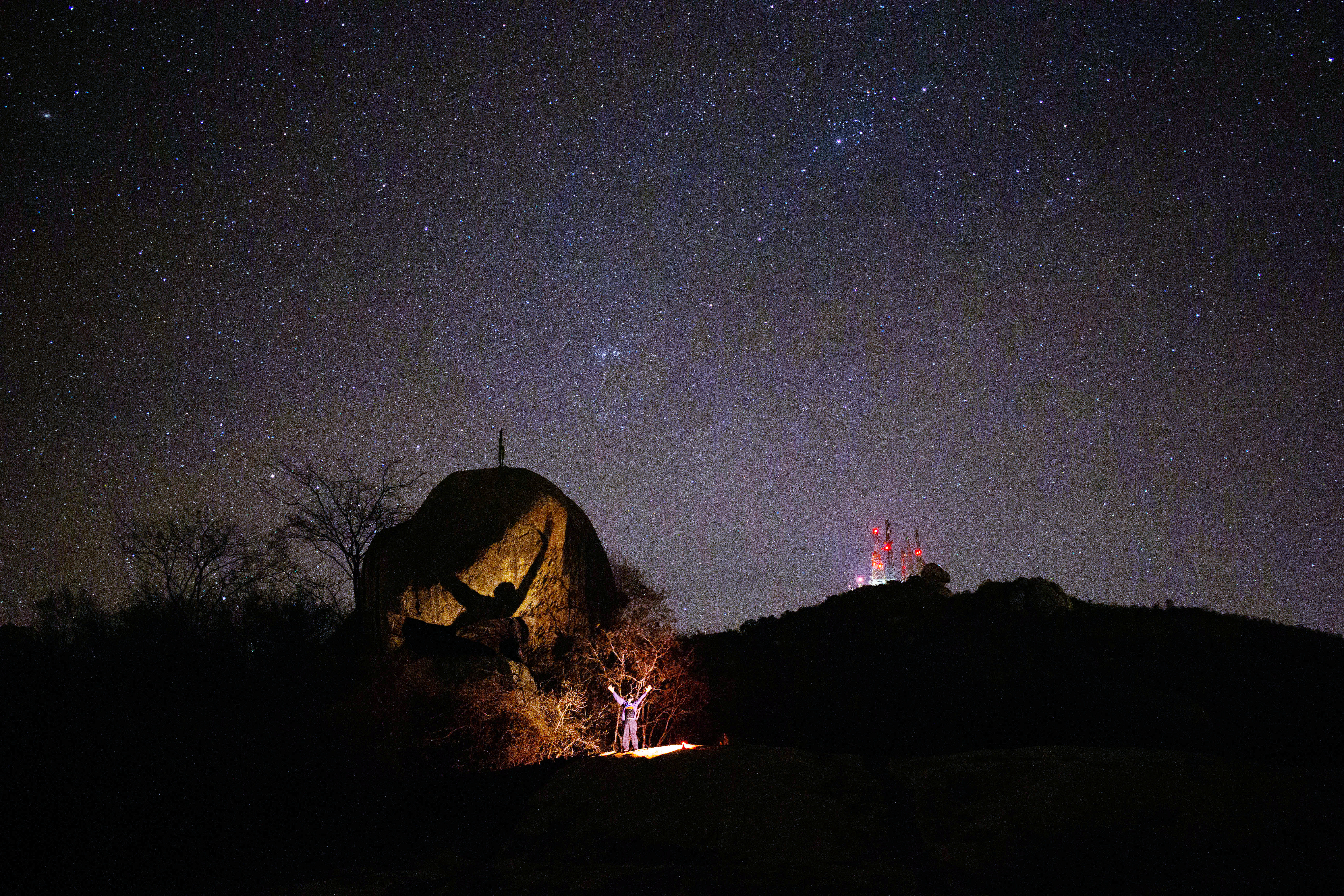Relatos de uma expedição ao ponto mais alto da Paraíba-Brasil / Accounts of an expedition to the highest point in Paraíba, Brazil
O sol despontava no horizonte, banhando os lajedos, a caatinga e todo o horizonte da paisagem da Paraíba em tons dourados. Pesquisadores da Universidade Federal da Paraíba se reuniam na pequena cidade de Matureia, com um objetivo audacioso em mente: compreender como a composição da diversidade varia conforme subimos para o ponto mais alto do estado, o Pico do Jabre.
Com mochilas repletas de suprimentos, equipamentos de camping e determinação, os pesquisadores partiram rumo à base da montanha. O caminho era relativamente fácil, porém com trilhas sinuosas e íngremes, mas a diversidade da natureza ao redor já apresentava os sinais de variação.
À medida que ganhavam altitude, a vegetação mudava, revelando uma paisagem florestal de brejo de altitude com afloramentos rochosos. O ar fresco da montanha revigorava os espíritos, enquanto o canto dos pássaros e o som do vento nas árvores criavam uma trilha sonora natural para a jornada.
Logo, barrigudas frondosas saudavam na borda da trilha e alimentavam espécies de beija-flor. Essas árvores, que chamam a atenção devido a sua estratégia de reter água no seu tronco, são endêmicas dos ambientes xéricos do nordeste do Brasil.
| Beija-flor-tesoura (Eupetomena macroura) visitando a barriguda |
|---|
 |
Chegando ao acampamento base, os pesquisadores montaram a estação de processamento e compartilharam uma refeição preparada. Finalmente quando alcançaram o topo perceberam uma vista panorâmica era de tirar o fôlego: "a dorsal da Borborema". Um mar de serras se estendendo até onde os olhos podiam ver com a cidade de Matureia parecendo uma pequena maquete lá embaixo.
A noite caiu, revelando um céu estrelado, evidenciando a via láctea devido baixa poluição luminosa das cidades do entorno, proporcionando um espetáculo celestial. Com a noite, temperatura baixou e logo brumas surgiam no topo das árvores. Seres noturnos despertavam de seus abrigos enquanto outros partiam para repousar.
| Astrofotografia do céu de Matureia. Foto: Caio Silva |
|---|
 |
Após momentos de contemplação e do trabalho ter sido executado, os pesquisadores iniciaram a descida, levando consigo memórias e informações relevantes de uma das expedição ao ponto mais alto da Paraíba.
Abaixo, um pouco da diversidade retratada por naturalistas que passaram pelo local.
The sun rose on the horizon, bathing the rocky terrain, the caatinga, and the entire horizon of the landscape of Paraíba in golden tones. Researchers from the Federal University of Paraíba gathered in the small town of Matureia with an ambitious goal in mind: to understand how the composition of diversity varies as we climb to the highest point of the state, Pico do Jabre.
With backpacks full of supplies, camping equipment, and determination, the researchers set off towards the base of the mountain. The path was relatively easy, albeit with winding and steep trails, but the diversity of nature around already showed signs of variation.
As they gained altitude, the vegetation changed, revealing a forest landscape of high-altitude marshes with rocky outcrops. The fresh mountain air invigorated the spirits, while the singing of birds and the sound of the wind in the trees created a natural soundtrack for the journey.
Soon, large-bellied trees greeted them at the edge of the trail and fed hummingbird species. These trees, which are attention-grabbing due to their water-retaining trunk strategy, are endemic to the xeric environments of northeastern Brazil.
| Swallow-tailed Hummingbird (Eupetomena macroura) visiting the Ceiba glaziovii |
|---|
 |
Arriving at the base camp, the researchers set up the processing station and shared a prepared meal. Finally, when they reached the top, they realized that the panoramic view was breathtaking: "the dorsal of Borborema". A sea of mountains stretching as far as the eye could see, with the city of Matureia looking like a small model down below.
Night fell, revealing a starry sky, highlighting the Milky Way due to the low light pollution from the surrounding cities, providing a celestial spectacle. With the night, the temperature dropped and soon mist rose from the treetops. Night creatures awakened from their shelters while others departed to rest.
|
Astrophotography of the sky in Matureia. Foto: Caio Silva |
|---|
 |
After moments of contemplation and work being carried out, the researchers began their descent, taking with them memories and relevant information from one of the expeditions to the highest point in Paraíba.
Below, a little bit of the diversity portrayed by naturalists who have passed through the area.




